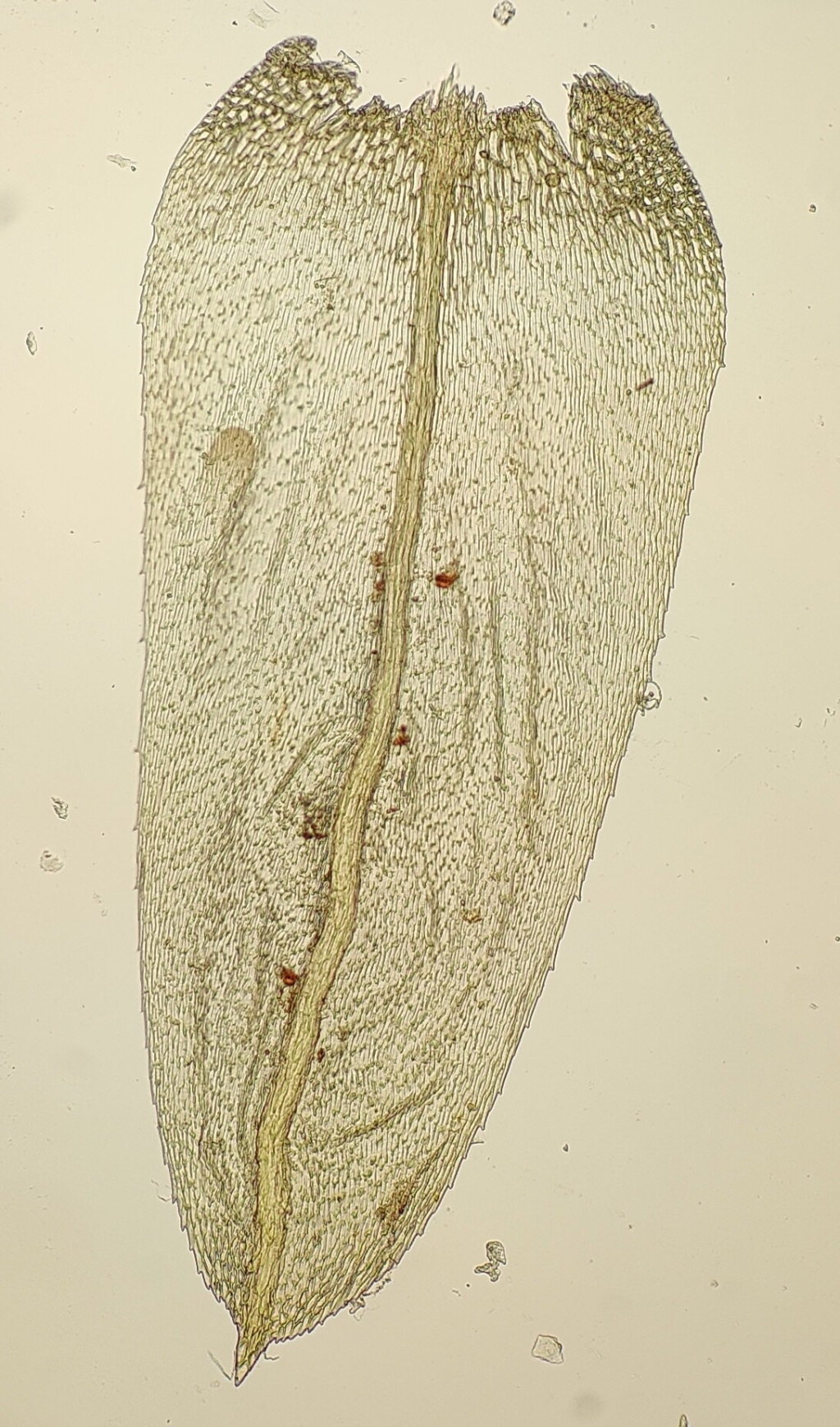Braithwaiteaceae
Dioicous. Asexual reproduction by filiform gemmae to 0.6 mm long borne on branches. Stems projecting horizontally from substrate, differentiated into a basal unbranched stipe section and a branched frond section, without paraphyllia, with foliose, spreading pseudoparaphyllia; central strand present; stipes tomentose at base only; fronds pinnate to bipinnate or irregular; branches within the same plane as the stipe. Stem and branch leaves differentiated. Stipe leaves appressed, becoming smaller toward apices, triangular, ovate or oblong. Branch leaves isomorphous, becoming smaller toward apices, erecto-patent when moist, imbricate when dry, ovate to ovate-oblong, with an obtuse to truncate or emarginate apex. Costa percurrent to shortly excurrent, near apex occasionally bearing minute adaxial teeth. Margins almost entire to serrate near apex, without a border. Laminal cells linear, smooth to weakly prorate. Alar cells weaky differentiated, quadrate to rectangular, usually thin-walled, forming a small elongate group. Pleurocarpous. Calyptra cucullate, smooth, glabrous. Capsules operculate, exserted, striate to angular or deeply sulcate. Peristome double; exostome of 16 teeth; endostome of 16 linear, unequal processes, with a low basal membrane; cilia absent.
One species in eastern mainland Australia, Lord Howe Island, New Zealand and New Caledonia.
Braithwaitea was traditionally placed in the Hypnodendraceae, which also has a combination of differentiated stem and branch leaves, toothed costa, sulcate capsules, prorate cells and stems differentiated into a basal unbranched stipe section and a more distal branched frond section (i.e. a ‘dendroid’ habit). Touw (1971) retained Braithwaiteaceae in the Hynodendraceae with reservation, lacking new data that would provide additional support for an alternative family placement. In phylogenetic analyses of combined chloroplast and mitochondrial DNA datasets, Braithwaitea was placed outside of the Hypnodendraceae, potentially closely related to the Racopilaceae (Bell & Newton 2005; Bell et al. 2007), also in the Hypnodendrales, providing the necessary impetus for the erection of its own family (Bell et al. 2007).
 Spinning
SpinningBell, N.E.; Newton, A.E. (2005). The paraphyly of Hypnodendron and the phylogeny of related non-Hypnanaean pleurocarpous mosses inferred from chloroplast and mitochondrial sequence data. Systematic Botany 30: 34–51.
Bell, N.E.; Quandt, D.; O’Brien, T.J.; Newton, A.E. (2007). Taxonomy and phylogeny in the earliest diverging pleurocarps: square holes and bifurcating pegs. The Bryologist 110: 533–560.
Touw, A. (1971). A taxonomic revision of the Hypnodendraceae (Musci). Blumea 19: 211–354.
Touw, A. (2012). Australian Mosses Online. 21. Braithwaiteaceae. http://www.anbg.gov.au/abrs/Mosses_online/Braithwaiteaceae.pdf.

